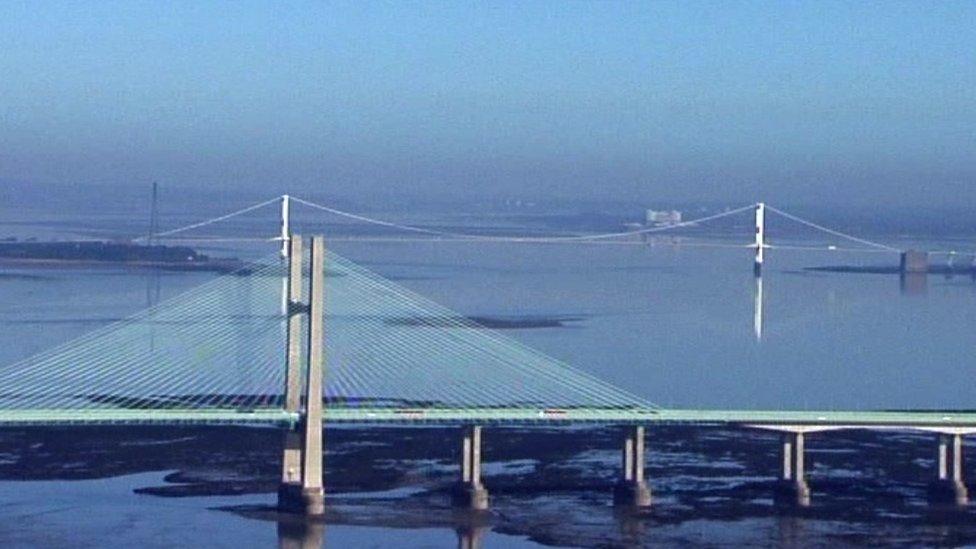Barmouth Bridge: 'Trigger's broom' bridge to get £30m upgrade
- Published
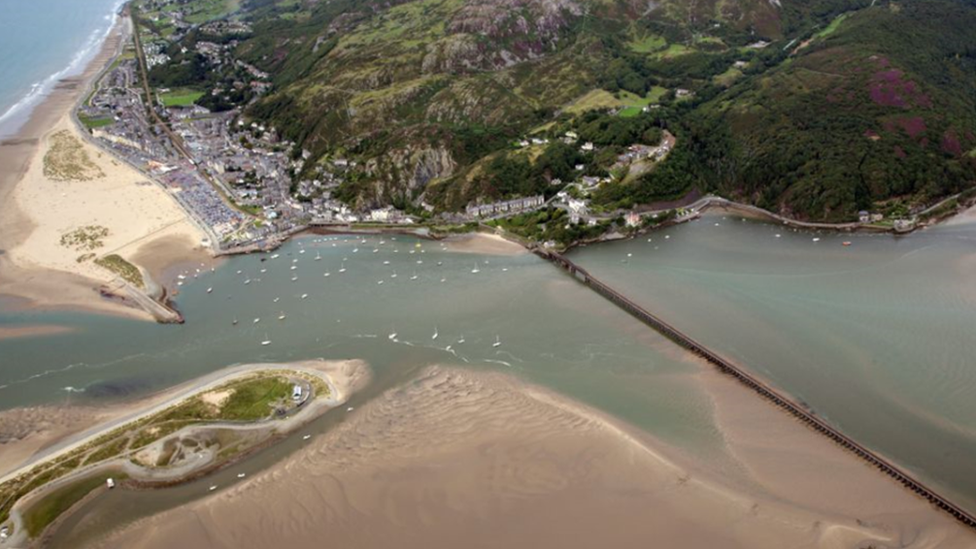
The Grade II listing means the structure has particular historic or architectural significance
The 'Trigger's broom' of bridges is to undergo a £30m restoration in a bid to keep the 154-year-old structure safe.
In the classic Only Fools and Horses scene, Trigger proudly reveals he has used the same broom for 20 years, saying deadpan: "This old thing has had 17 new heads and 14 new handles!"
Much like Trigger's broom, there is little remaining of the original 1867 Barmouth Bridge in north-west Wales.
Now the Grade II listed rail and foot bridge will undergo another facelift.
Spanning 840m (2,750ft) across the Mawddach Estuary in Gwynedd, it is the largest wooden viaduct still in regular use anywhere on the UK rail system.
To the Network Rail team caring for it, the 154-year-old Barmouth Bridge is affectionately known as 'Trigger's broom'.
While the loveable road sweeper in the hit BBC comedy had the responsibility of looking after his broom, it's Helen Hodgson of Network Rail who has the responsibility of maintaining the historically-significant bridge.
Allow YouTube content?
This article contains content provided by Google YouTube. We ask for your permission before anything is loaded, as they may be using cookies and other technologies. You may want to read Google’s cookie policy, external and privacy policy, external before accepting. To view this content choose ‘accept and continue’.


Trigger was one of the main characters in classic BBC TV sitcom Only Fools and Horses
It is a vital part of the UK railway network - carrying Cambrian Line trains between Birmingham and Shrewsbury to Pwllheli - but also needs a number of upgrades over the next two years.
"There aren't many rail bridges around the UK which are a tourist destination in themselves," she said.
"But every year thousands of people come to walk across Barmouth Bridge, catch a train over the Mawddach, or simply stand and take photos of it
"We want to preserve that famous appearance, but at the same time we have to make sure it can keep functioning as an integral part of the rail network from Shrewsbury to Pwllheli, and an essential daily link for hundreds of commuters and school children."
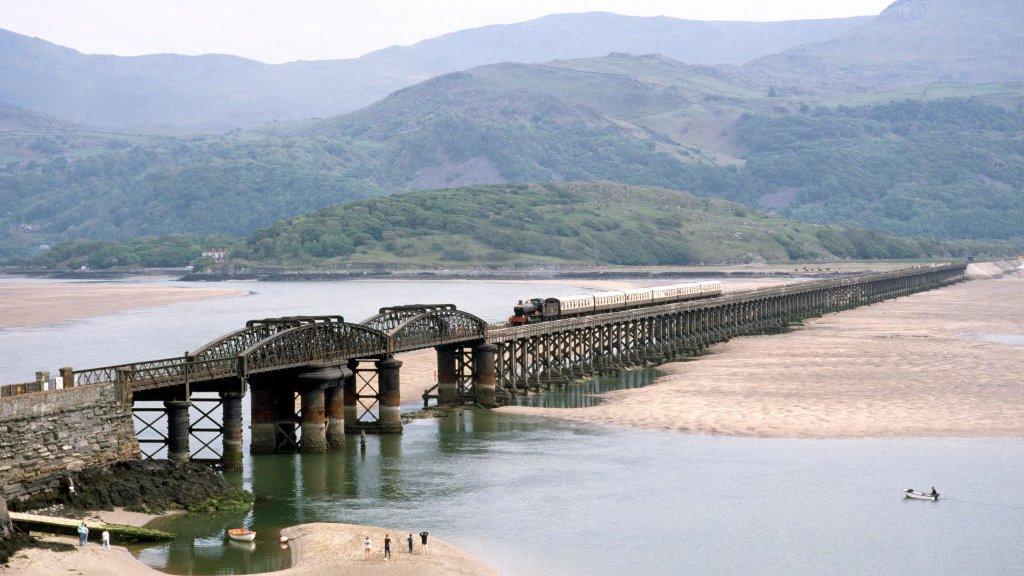
Very little of the original Barmouth Bridge remains, after decades of alterations and maintenance
Built between 1864 and 1867, the first incarnation of Barmouth Bridge was a 700m (2,300ft) wooden viaduct surmounted with a drawbridge that could be raised to allow shipping to pass underneath.
In 1900, this was replaced with a swing bridge which pivoted 90 degrees around one of the central wooden piles, creating two shipping lanes either side.
However, as the majority of the structure was made from softwoods such as pitch pine and Douglas firs, throughout its history, rotten timbers had to be regularly replaced, to the extent that there is virtually nothing of the 1854 bridge remaining.
Matters reached crisis-point in the early 1980s, when it was discovered that the enormous wooden piles which hold up the entire structure were infested with teredo shipworm.
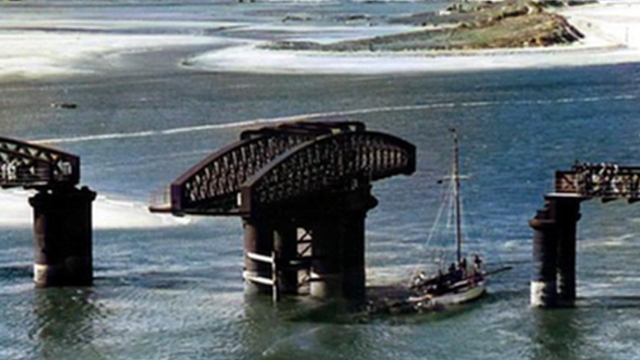
Barmouth Bridge's no longer functional swing system, pictured in 1957
That marked the end of Barmouth as a functioning swing bridge.
Mrs Hodgson said: "In the '80s the only way to save the bridge in time was to encase the piles in concrete sheaths, almost like booties around the legs.
"In lockdown last year we were able to take the opportunity to prop up the bridge while we removed the concrete and replaced the softwood piles with hardwoods specially selected from the far east for their resistance to infestation."
She said the old piles had "the appearance and consistency of Swiss cheese" when they came out of the water.
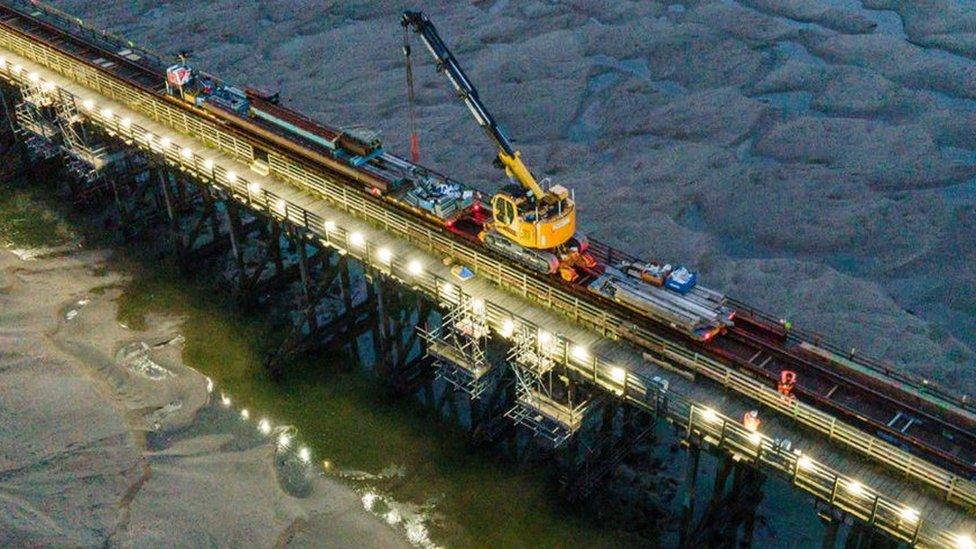
The UK's pandemic lockdown offered an opportunity to conduct further work on the bridge
During the first phase of the renovation, running from Sunday until 12 December, all the planks of the bridge's bed will be replaced with the same hardwoods and the entire length of track will be replaced.
In the second phase, running until 2023, the metallic spans will be replaced like-for-like and future-proofed against corrosion.
Yet a decision had to be taken not to reinstate the bridge's swing function.
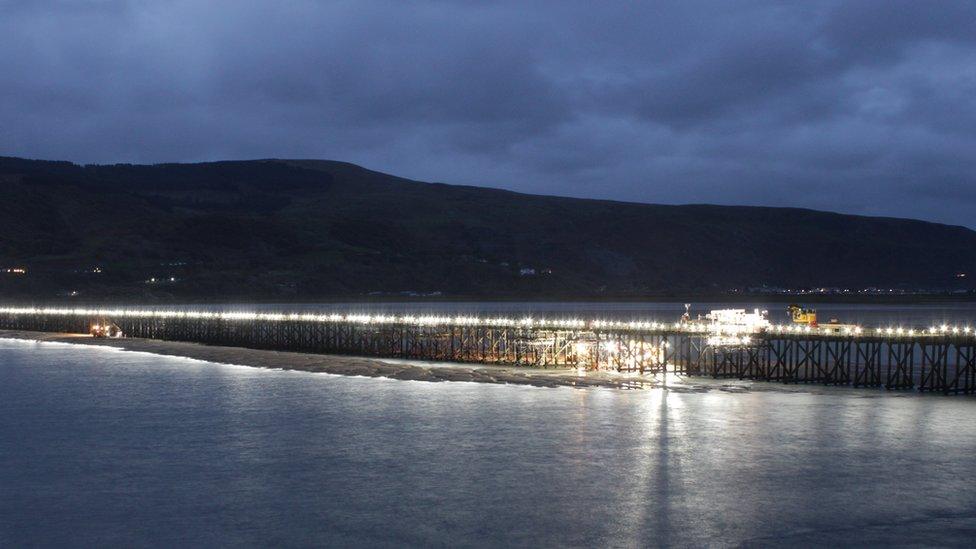
It was decided modern mechanisms would destroy the look of the bridge
"We've worked closely on this with the Snowdonia National Park, Gwynedd Council and Cadw," said Mrs Hodgson.
"In the end we all concluded that to restore Barmouth to a swing bridge would need a great deal of modern mechanisms which would destroy the iconic appearance which people come to see.
"Instead, we've decided to retain all the original workings as they were in 1900, as its listed status requires, as really there is no need for large ships to pass beneath in these modern times."
Mrs Hodgson believes that, rather than being set in time, a bridge such as Barmouth is a living entity.
"What we're trying to achieve is an evolution of the bridge. It's still the same structure which everyone loves, but in the same way as people grow up, the bridge is maturing and improving.
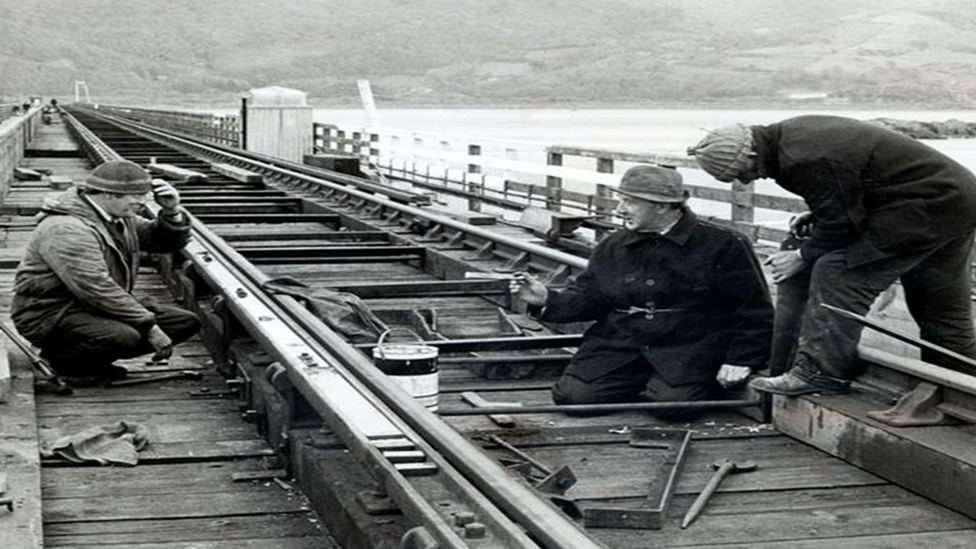
Built in the mid 1800's, the bridge remains one of the largest wooden viaducts in the UK
"I'd like to think that the sympathetic restoration we're carrying out is exactly how the original builders would have done it if they'd had access to the same materials and technology as we do."
Though she does hope that there are some practices which will not be replicated this time around.
"As you can see from the photos, I hope our work will include a bit more hard hats and high-vis, and considerably fewer men hanging over the side with flat-caps and cigarettes dangling from their mouths."

A KILLING IN TIGER BAY: The full and shocking true story

Related topics
- Published22 August 2018

- Published26 January 2021

- Published8 January 2018
